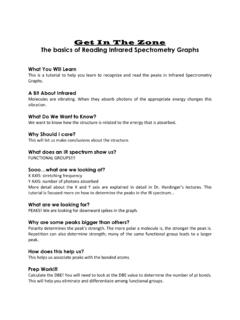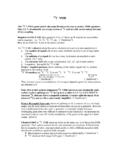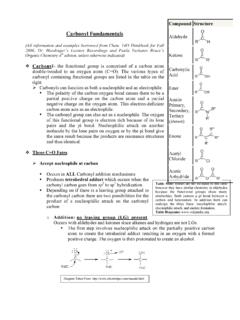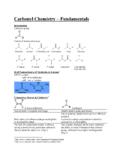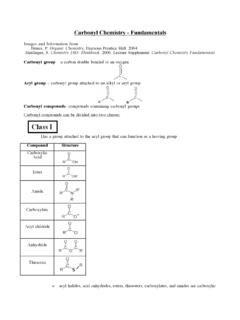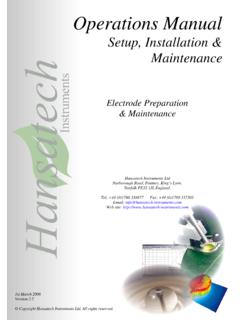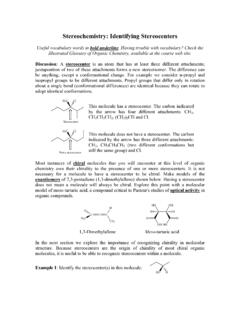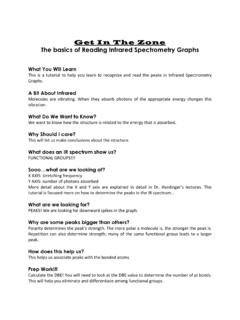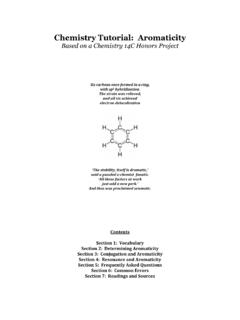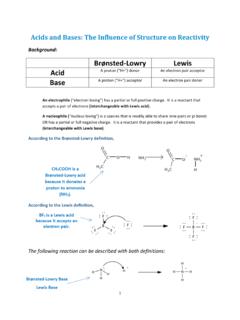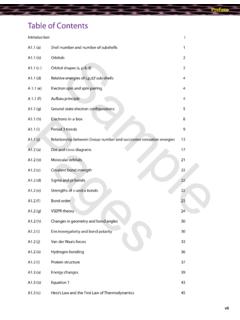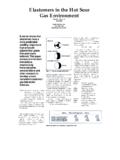Transcription of Shielding vs. Deshielding - UCLA
1 Shielding vs. Deshielding : Pre-tutorial: Things we need to know before we start the topic: What does the NMR Chemical shift do? The chemical shift is telling us the strength of the magnetic field that the nucleus feels. The NMR chemical allows for distinguishing magnetically inequivalent nuclei in a molecule. ( ) Molecules nuclei are not separated from charged particles such as electrons; therefore, the electrons will always have an impact on the nuclei. A nucleus feels a field that doesn t exactly equal to applied external magnetic field. The difference between the external magnetic field and the field felt by the nucleus is very small for protons and we use ppm, which stands for parts per million. We call the small difference Shielding . Before we begin talking about Shielding vs. Deshielding , let s become familiar with the electronegativity values of H, C, N, O, F, P, S, Cl, Br, I. (You can also find a table of electronegativitiy values on page10 of Professor Steven Hardinger s 5th Edition Thinkbook.)
2 For the purposes of this tutorial, electronegativity values of the atoms will be arranged as following: F= O= N= ; Cl= Br= I= ; S= ; C= P= H= (Silicon has an electronegativity value of , even smaller than Hydrogen) NOW LET S START!!! Hydrogen atoms in the molecule feel different magnetic fields depending upon their location and the neighbor they directly attached to. Definitions: What is Shielding ? Upfield The Nucleus feels weaker magnetic field. Shielding is a barrier made of inner-shell electrons and it decreases the nucleus pull on the outer electrons. On Professor Hardinger s website, shielded is defined as a nucleus whose chemical shift has been decreased due to addition of electron density, magnetic induction, or other effects. What is Deshielding ? Downfield The Nucleus feels stronger magnetic field. Deshielding is the opposite of Shielding . When we say that an atom is deshielded, we mean that A nucleus whose chemical shift has been increased due to removal of electron density, magnetic induction, or other effects.
3 Practice Problems: 1. Circle the proton(s) that is/ are more shielded: 2. Which of the following atoms has the lowest electronegativity? a. Oxygen b. Fluorine c. Carbon d. Phosphorus e. Bromine 3. Which of the following attaching protons will have the highest electron density? a. H-O b. H-C c. H-F d. H-Br e. H-P 4. Which of the following attaching protons is the most shielded? a. H-O b. H-C c. H-F d. H-Br e. H-P 5. Which of the following attaching protons is the most deshielded? a. H-O b. H-C c. H-F d. H-Br e. H-P 6. Which of the following attaching protons has the lowest chemical shift? a. H-O b. H-C c. H-F d. H-Br e. H-P 7. Which of the following attaching protons has the highest chemical shift? a. H-O b. H-C c. H-F d. H-Br e. H-P 8. Rank the following molecules in the order of the one with most deshielded proton(s) to the one with least deshielded proton(s). CH3, CH2, CH4, CH 9. Fill-in-the-blank: Higher electronegativity of the atom that the proton is attached to, the electron density at the proton is _____; the proton is _____ shielded; the proton has a _____ chemical shift.
4 10. Circle the proton(s) that is/are least shielded. 11. If a proton is more shielded, then it has _____ chemical shift. 12. Which of the following atoms has the highest electronegativity? a. Oxygen b. Iodine c. Carbon d. Phosphorus e. Bromine Solutions: 1. 2. d. Phosphorus 3. e. H-P 4. c. H-P 5. c. H-F 6. e. H-P 7. c. H-F 8. Most deshielded CH< CH2<CH3<CH4 least deshielded 9. Lower; less; higher 10. 11. lower 12. a. oxygen Reference: Hardinger, Steven. Chemistry 14C: Structure of Organic Molecules : Course Thinkbook : Concept Focus Questions, OWLS Problems, Practice Problems. Plymouth, MI: Hayden-McNeil, 2011. Print. Hardinger, Steven. Chemistry 14C: Organic Molecular Structures and Interactions : Lecture Supplements. Plymouth, MI: Hayden-McNeil Pub., 2008. Print. Websites: Graphics for practice problems: Problem 1 image: Problem 10 image.
